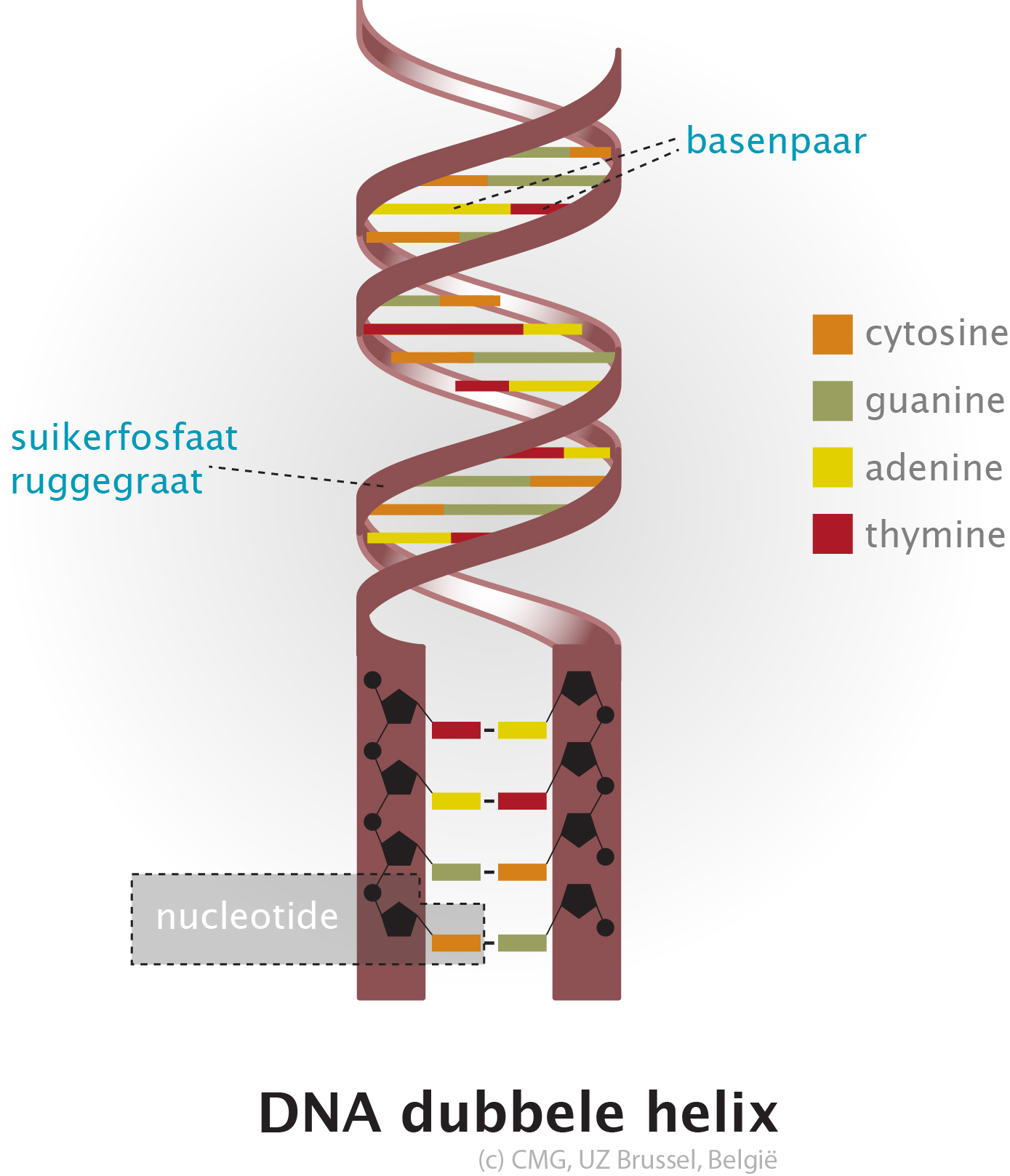DNA

DNA is a chain (in humans) of billions of nucleotides (or bases) arranged in a specific sequence. There are only four different bases:
- Adenine (A)
- Cytosine (C)
- Guanine (G)
- Thymine (T)
These are joined in a constantly changing sequence to a chain of sugars and phosphates, thereby forming a long chain.
They occur in pairs and every base is joined to another base (always the same one):
- A is always joined to T (and T to A);
- C always to G (and G to C).
In other words DNA forms a double chain that looks like a rolled-up spiral ladder. Each pair of bases forms a single rung on this ladder. This is the so-called double helix structure of DNA (see the diagram).
The bonded nucleotides - always in groups of three (see genes) - are responsible for making all the amino acids in our body. Amino acids join together to form proteins, and these are in turn needed to build or repair cells and tissues.
In short: the long DNA code controls our whole organism, so those four letters form the basis for all human life.